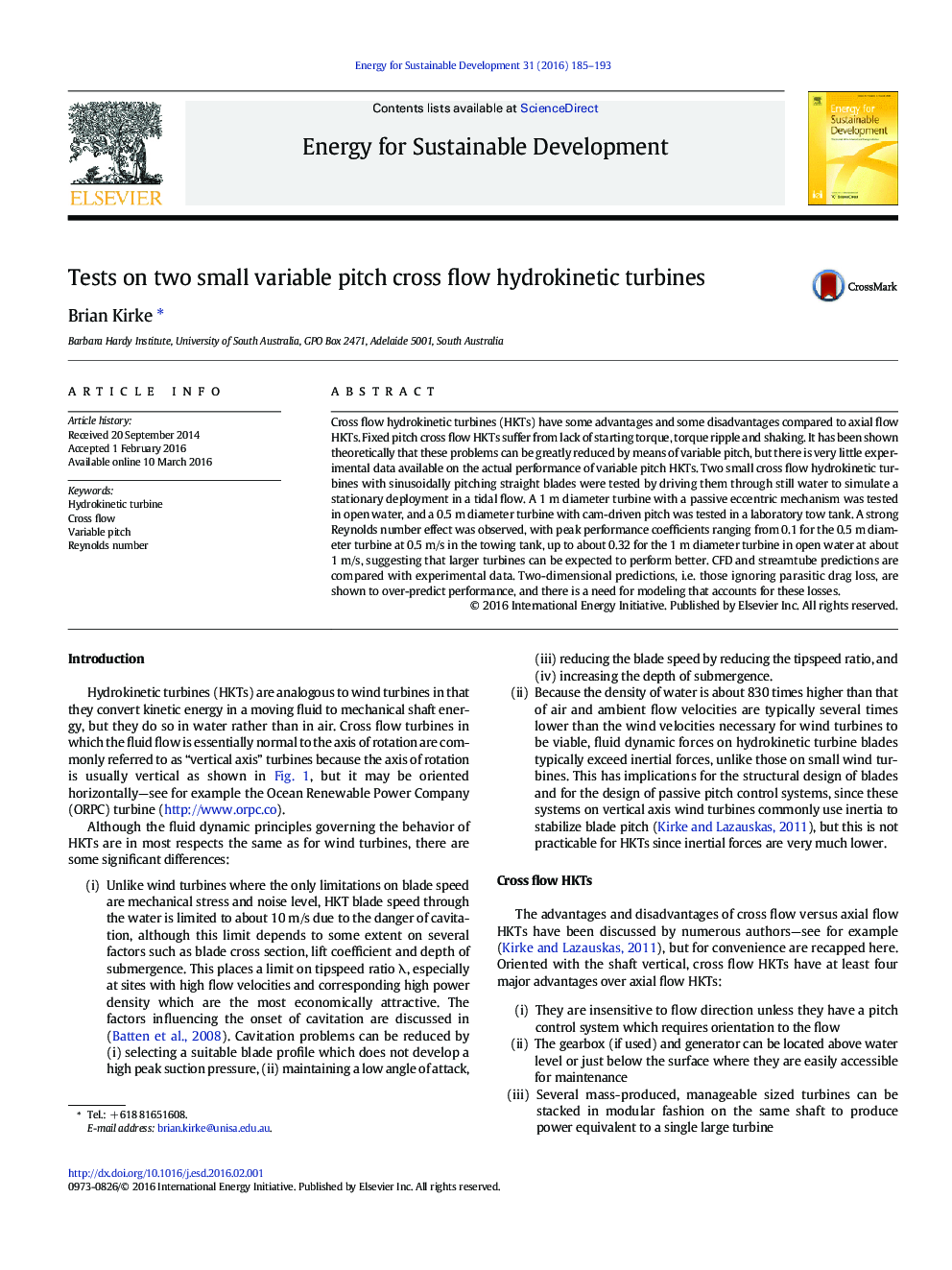| Article ID | Journal | Published Year | Pages | File Type |
|---|---|---|---|---|
| 1046819 | Energy for Sustainable Development | 2016 | 9 Pages |
•Advantages of variable pitch cross flow turbines over fixed pitch turbines are discussed.•Experimental and theoretical performance of variable pitch cross flow turbines are presented.•Reasons for discrepancies are discussed.•The need for 3 dimensional simulations is illustrated.
Cross flow hydrokinetic turbines (HKTs) have some advantages and some disadvantages compared to axial flow HKTs. Fixed pitch cross flow HKTs suffer from lack of starting torque, torque ripple and shaking. It has been shown theoretically that these problems can be greatly reduced by means of variable pitch, but there is very little experimental data available on the actual performance of variable pitch HKTs. Two small cross flow hydrokinetic turbines with sinusoidally pitching straight blades were tested by driving them through still water to simulate a stationary deployment in a tidal flow. A 1 m diameter turbine with a passive eccentric mechanism was tested in open water, and a 0.5 m diameter turbine with cam-driven pitch was tested in a laboratory tow tank. A strong Reynolds number effect was observed, with peak performance coefficients ranging from 0.1 for the 0.5 m diameter turbine at 0.5 m/s in the towing tank, up to about 0.32 for the 1 m diameter turbine in open water at about 1 m/s, suggesting that larger turbines can be expected to perform better. CFD and streamtube predictions are compared with experimental data. Two-dimensional predictions, i.e. those ignoring parasitic drag loss, are shown to over-predict performance, and there is a need for modeling that accounts for these losses.
